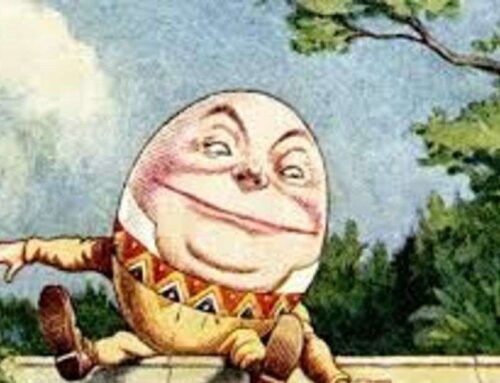If you’ve read your King James version of the Bible lately you might have noted that Ecclesiastes 1:9 says “There is no new thing under the sun.”
It’s interesting to ponder how much innovation is achieved by variation of the old as opposed to introduction of the new.
Steve Jobs once said any new idea is nothing more than a new combination of old elements. If you’ve read your King James version of the Bible lately you might have noted that Ecclesiastes 1:9 says “There is no new thing under the sun.”
Not everything that is old is bad and not everything that is new is good. There are some ubiquitous things that haven’t been improved upon over centuries, and probably never will be. Everyday items like combs, knives, forks spoons and chopsticks come to mind.
Robert Lacey and Danny Danziger, in their book “The Year 1000”, pointed out; “What C.S. Lewis called the “snobbery of chronology” encourages us to presume that just because we happen to have lived after our ancestors and can read books which give us some account of what happened to them, we must also know better than them. We may have more wealth, both personal and national, better technology and infinitely more skilful ways of preserving and extending our lives, but whether we today display more wisdom or common humanity is an open question.”
Talking of wisdom, one of the best bits of commercial wisdom I ever received was from an old bloke who paid a visit just after I had started up a company called Replica Homes. He had been watching building progress of a show home and asked if we were “…putting it up or pulling it down?”. He though I would get plenty of skeptical comments, but that I should stick to my guns and be patient.
His words were; “Don’t pull up the carrots to see if they are growing.” One of the sagest things I’ve ever heard.
It resonates with an observation from ‘The Year 1000.’ “…as we look back to discover how people coped with daily difficulties of existence a thousand years ago, we might also consider whether, in all our sophistication, we could meet the challenges of their world with the same fortitude, good humour and philosophy.”
Interestingly, an Anglo Saxon (circa 1000AD) was strong and healthy… “very much the size of anyone alive today.” “Nine out of ten of them lived in a green and unpolluted countryside on a simple, wholesome diet that grew sturdy limbs — and very healthy teeth.”
A thousand years ago lives were regulated by the seasons, rather than progressive chronology. Life was seen as cyclical rather than linear. The methods of timekeeping were rudimentary and fixed by sunrise and sunset rather than any sophisticated timepiece — a bit like a holiday in Fiji.
Daytime was a time for labour in the fields and night time was given over to mythical creatures of the night or, when the occasion called for it, feasting. Banquets lay at the heart of Anglo Saxon life.
Spit-roasted beef was the main treat, followed by pork. Venison was specially prized but rare, least favoured was mutton — “food for slaves”. Game birds, poultry and fish were also plentiful.
Danziger and Lacey also make some interesting nutritional observations. “The relatively small amounts of fat on all these meats would be viewed by modern nutritionists with quite a kindly eye. All Anglo Saxon animals were free range, and the Anglo Saxons would have been shocked at the idea of ploughing land to produce animal feed. Ploughland was for feeding humans. So farm animals were lean and rangy, their meat containing three times as much protein as fat. With modern, intensively reared animals that ratio is often reversed.” Jenny Craig would have gone broke waiting for customers.
On the other hand, hygiene and medicine weren’t so hot. They weren’t big on bathing and there was no sophisticated perfume industry around to enable them to cover up the consequent pong. They would have taken their own knives to the feast to carve off chunks of meat or bread, a wooden spoon would have been used to ladle out a vegetable gruel of some kind. Spuds hadn’t yet arrived in Europe from South America and the notion of spearing anything with a fork lay a few hundred of years in the future
But it wasn’t all bad, the Anglo Saxons were a humorous lot, quick with stories and riddles to help while away the nights. They certainly weren’t altogether sober and responsible either. Mead, the sweet and potent brew distilled from honeycombs was the drink of choice. Ale and wine were plentiful but had to be drunk fresh as there were no stoppered bottles in which to store them.
There was a fair degree of indulgence in mind-altering substances as well, albeit inadvertently. Mid-summer madness was a common phenomenon. As the long summer nights wore on, “People were light headed through lack of food, and modern chemistry has shown how the ergot that flowered on rye as it grew mouldy was a source of Lysergic acid — LSD, the cult drug of the 1960’s.” No one needed party-pills or “P”.
So what really is new?






